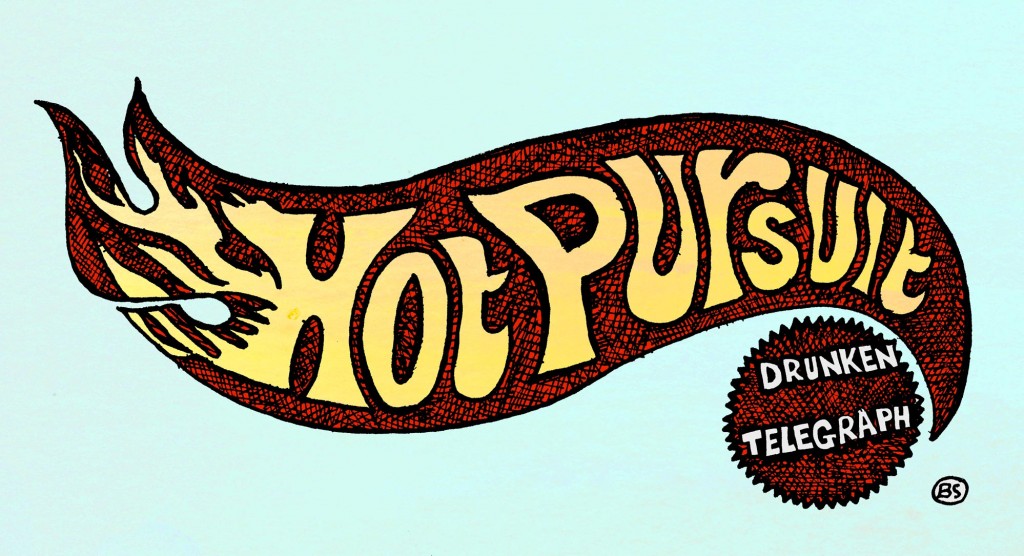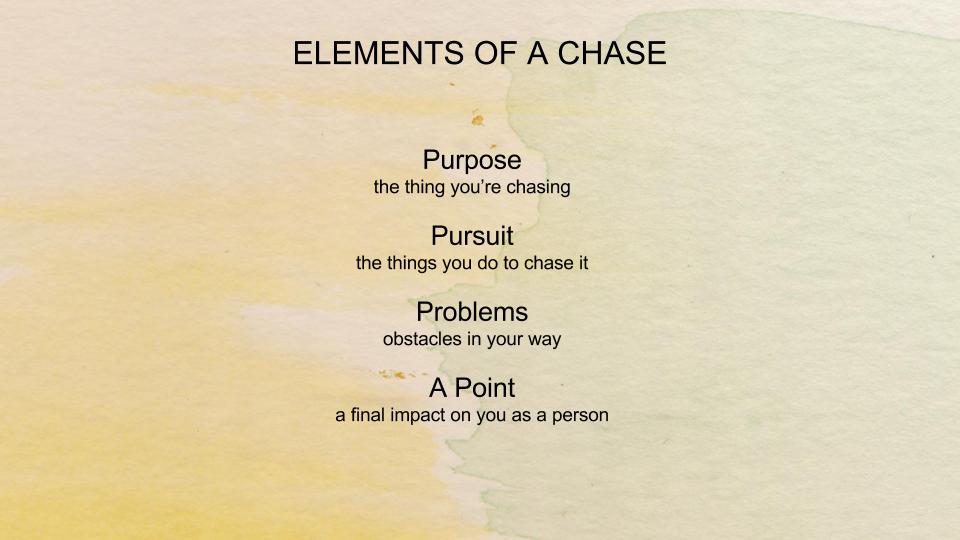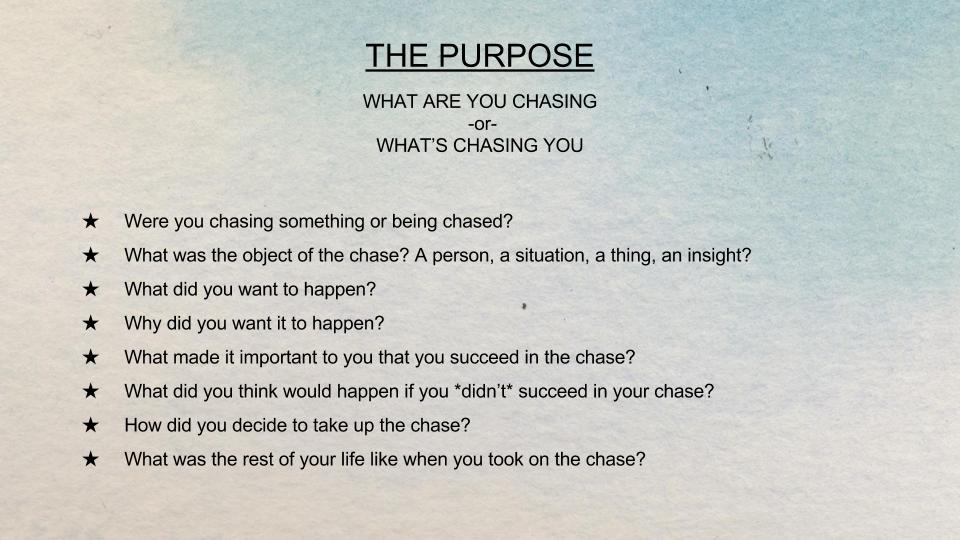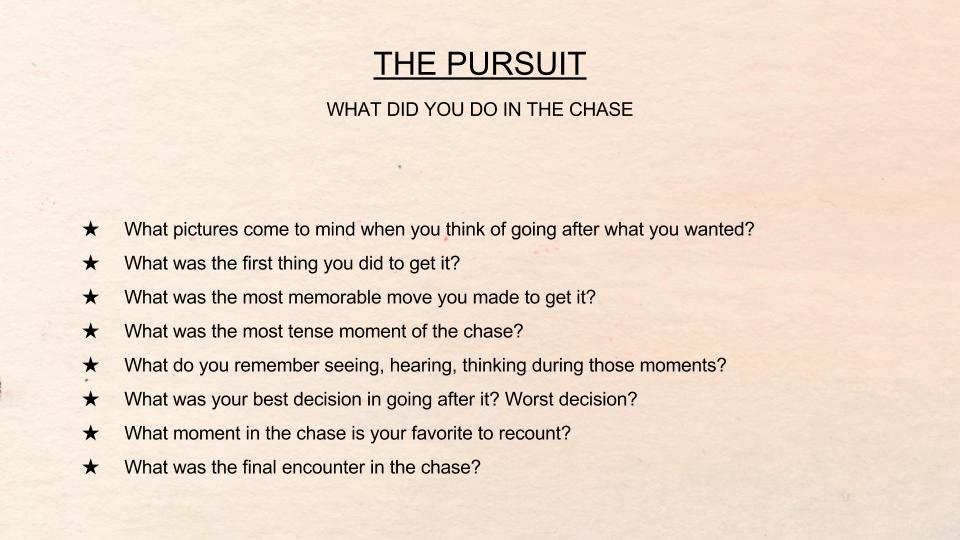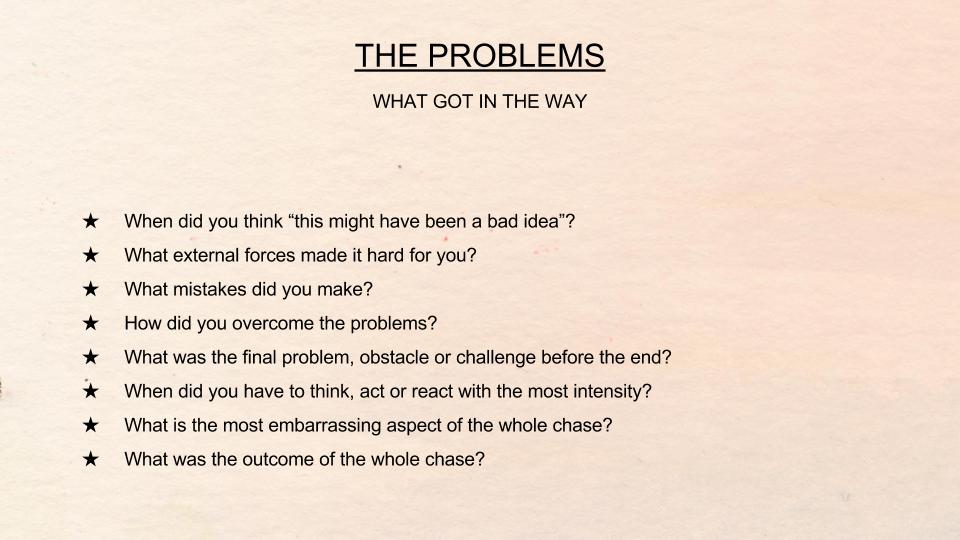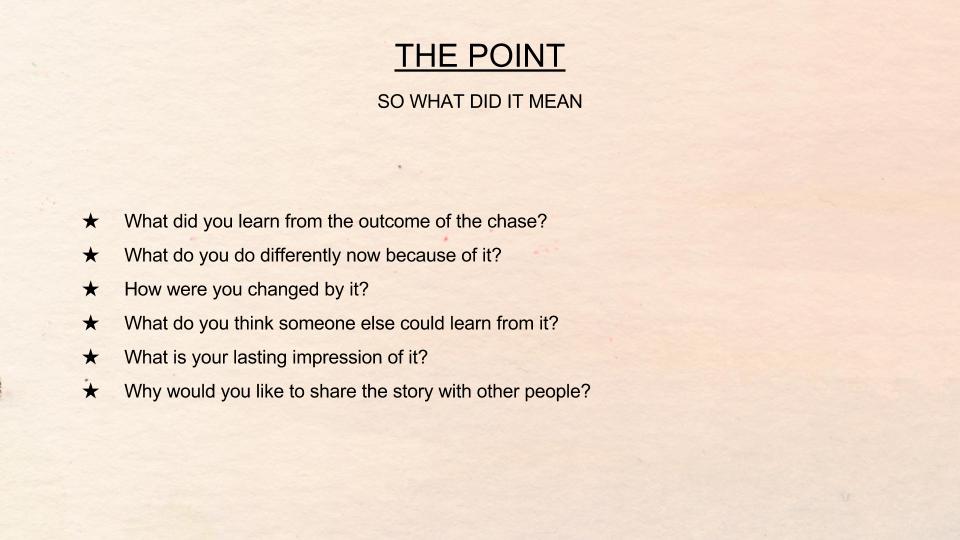Our next show is Friday, April 11th, 2014 at Tacoma’s Broadway Center, Studio III. Reserve your ticket now. We had an overflow crowd last time and you don’t want to miss this lineup!
Six storytellers will take the Main Stage with tales of chasing Paradise, youth, a suspected killer, an Olympic athlete, sexiness and the Universe itself.
If you’d like to take the stage for our Story Slam, here are some storytelling tips from our February workshop at King’s Books.
A good story is like a good chase. Interesting action is good, but it also needs a purpose and a reason for telling it. Without those two elements, a story can come across as simply a list of things that happened. Even if the events are out of the ordinary, if the story doesn’t have context the audience will have trouble caring about it.
For example, take a look at this montage of romantic chases from popular movies. Pay attention to how you react to scenes from movies you recognize versus movies you haven’t seen.
If you know that Meg Ryan and Billy Crystal have been skirting around their own love for nearly two hours, you might recall the tension of hoping they will finally fall into each other’s arms. If you don’t know why George Clooney is running through the airport, you probably don’t care whether he makes his plane.
Likewise, in telling our own personal stories, we need to give people enough context for the exciting parts so they can can cheer along with us, have a stake in whether we succeed or fall flat on our faces. At the same time, there needs to be enough interesting elements and tension to hold the audience’s attention.
***CREATIVE DISCLAIMER***
There are many, many ways to tell a story.
Here, I offer one way to think of structuring a personal tale and some provocative questions that can help you unlock the parts of your own experience that will hook an audience.
In keeping with the theme of our next show, I compare a story to a good chase.
Again, this is not the *only* way to prepare a story, but it’s one way that might help you transform your real-life adventure into a stage-worthy tale.
**************************************
A story doesn’t have to be about an *actual* chase to include all these elements. Basically, the idea of chasing something is the same as having a ‘goal’ or ‘expectations’ about a potential outcome. For example, if you decide to learn Italian because you want to strike up a conversation with that attractive exchange student, you are chasing more than just fluency in a foreign language. The object of your chase is that person, romance or friendship.
If you want to tell a story about something that happened in your life, you can use this list to make sure you’re including all the details that will help your tale draw in a listener and keep them paying attention until the final moment.
There’s not a *right* answer to any of these questions. They are a way to explore your experience as if you were a character in your own movie.
The question “What did you think would happen if you *didn’t* succeed” gets at another critical element in a story: stakes. Stakes are what make the story matter. When Luke goes on the Death Star trench run, the future of the Rebellion is at stake.
We may not have a Galaxy hanging in the balance for our own experiences, but things like ‘loneliness’, ‘bankruptcy’, ‘shame’, or ‘an ass-whooping’ can be the threat that drives us to do something outside our normal routine.
From our last show, “Epic Battles”, here’s how Jim Kopriva set up the purpose – and stakes – for his story.
Also from the Story Slam at our last show, this is Jessica Cohoe establishing why she had to tangle with the Washington State DMV.
Once you’ve established *why* you went on your chase, you’re ready to get to the good stuff, the action. You don’t necessarily include absolutely everything that happened. In fact, sometimes there are parts of the action that might be funny or exciting, but they are tangents that don’t really affect the outcome. However, you won’t know which part is important until you fully flesh out all the things that happened.
The question “What moment in the chase is your favorite to recount” is an important one. More than anything, you want to be telling a story that you enjoy telling. If you get up on stage without a good sense of the scope of your story, you might get bogged down in tangents and unimportant details. Identifying the key moments that made you think the experience was worth sharing can help you tell your story within the five-minute time limit at the Slam!
Likewise, knowing the “final encounter” or The End Of The Story is essential. Storytelling is like joke-telling in that way. You want to have a clear picture of where your story will END, so that you can get there as directly as possible. Those tangents don’t just mess up your timing, they make listeners lose interest.
From our last show, Colin McArthur recounts the key events of his Epic Battle with an injured eagle.
And this is how Erin Walker shared her father’s pursuit of a prize fish at the Memphis airport.
Here comes a key tip for telling a good story, there needs to be problems. I like to say that if you didn’t encounter any problems, then it’s not a story, it’s just bragging.
Problems, challenges, obstacles, these are what everyone in the world faces when we try to do things. Even if you’re simply jumping rope, gravity is fighting you the whole time. If you can identify the things that you had to overcome to get that thing you wanted, the Italian exchange student or destroying the Death Star, you give your listeners a chance to identify with you.
This part of a personal story can be hard to share. We work pretty hard in real life to hide our mistakes. When I do a one-on-one workshop with people, though, this is where I remind them that storytelling is a gift. Allowing others to see you in a vulnerable position, making a mistake, having doubt, getting rejected, gives the audience a chance to identify with you as a real person. Even the biggest superheroes have to have weaknesses. This is the stage of story development where you want to identify your kryptonite.
Tricia DeOme shared the problems she faced when she tried to get the City of Tacoma to ban digital billboards.
This is how Ken Sikes shared the big problem from his story of pilfering a pizza as a senior in high school.
The final element of a story is the most important. You need a point.
If you don’t have a point to your story, you’re in danger of sounding like Grandpa Simpson.
There are lots of ways to make your point about the story. It can be as simple as ending with, “And the point of the story is…” You can also take the approach of “And that’s why I do <this> now.” Or, you can say why the story matters to you, how it changed you or what you hope someone else would learn from your experience
Depending on your skills at story weaving, you may not need to say anything specific to make your point, you may be able to craft the whole tale so that the ending makes the point for you. The most important thing is that your story comes to a conclusion rather than trailing off. A satisfying ending is what makes people remember your story.
If you’re having trouble making a point, or not sure if you doing it, I recommend telling your story to as many people as you can trick into listening. Ask them what they got from it, that can help you figure out if it’s connecting or if it’s a shaggy dog story.
Here’s a medley of the endings from stories told at our last show, “Epic Battles”.
That’s it! Find the purpose, the pursuit, the problems and the point of your own real-life experience and you’re on your way to telling a great story and turning yourself into the star of your own movie.
Now go reserve your ticket to our April 11th show already!
